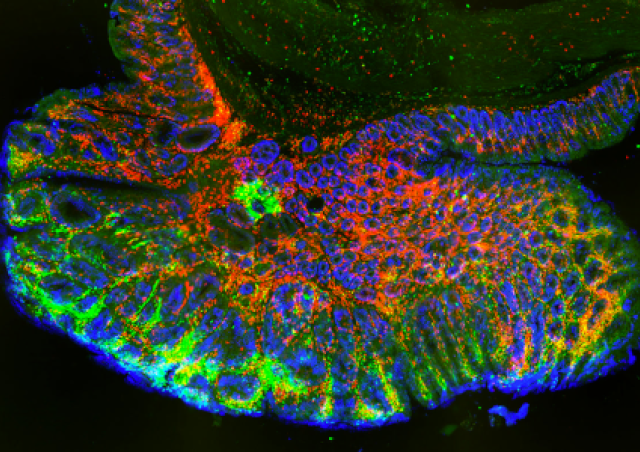Project members
Project
The global pandemic of obesity and Type 2 Diabetes (T2DM) is a major health problem. According to the WHO, the number of deaths from obesity and T2DM will double between 2005 and 2030. The urgent need to identify new treatments without side effects therefore remains increasingly relevant and new therapeutic strategies must be developed. Obesity and T2DM are associated with resistance to the action of insulin in its target tissues (muscle, liver, adipose tissue…) and with alterations in the metabolism of carbohydrates and lipids. An increase in lipid intake and/or a reduction in mitochondrial oxidation of fatty acids (FAO) in the liver and skeletal muscle participate in the development of insulin resistance. When the intake of long-chain fatty acids (LCFAs) exceeds the oxidative capacity of the cell, the accumulation of toxic lipid derivatives interferes with insulin signaling, and are associated with insulin resistance, oxidative stress and inflammation.
Carnitine palmitoyltransferase 1 (CPT1) is a key regulatory enzyme that controls the mitochondrial entry of LCFA. Its activity is inhibited by malonyl-CoA, a metabolic intermediate of de novo LCFA synthesis (lipogenesis). This CPT1/malonyl-CoA partnership is considered as a « fuel sensor » regulating the rate of FAO according to the relative disposal of LCFA and glucose. Our research aims to better understand the pathophysiological importance of CPT1/malonyl-CoA partnership in different organs, tissues or cells, as well as the alterations of the carbohydrate-lipid metabolism in various pathological situations. Other projects are being developed in close collaboration with laboratories given our expertise in the exploration of metabolic fluxes using radiolabeled tracers and of mitochondrial function, in particular by High-Resolution Respirometry.
Mitochondrial lipid oxidation and metabolic diseases (funded by IDEX 2015-2017, SFD 2014, SFD 2017-2021)
We showed that expression of a constitutively active form of CPT1 (CPT1mt) in adult mouse liver (Monsénégo et al. J. Hepatol. 2012) or muscle (Vavrova et al. Am. J. Physiol. 2016) increased FAO capacity of the targeted tissue, and decreased diet-induced tissue lipotoxicity and insulin resistance in vivo. Muscle CPT1mt expression also induced muscle remodeling towards an oxidative phenotype mimicking physical exercise (Hénique et al. FASEB J. 2015). This provided evidence for the pathophysiological importance of controlling mitochondrial fatty acid entry in metabolic diseases (PhDs of J. Monsénégo, C. Hénique and E. Vavrova).
Non-alcoholic fatty liver disease (NAFLD) is a major public health issue and is the liver manifestation of the metabolic syndrome. Non-alcoholic steatohepatitis (NASH) is the major complication of NAFLD as it has potential risk of progression towards cirrhosis and hepatic carcinoma. Clinical or biological parameters cannot presently predict the patients’ histological lesions. Moreover, altered hepatic mitochondria or oxidative phosphorylation defects are typically observed during NASH but the precise role of mitochondria in NAFLD remains poorly understood. In close collaboration with clinicians from Jean Verdier Hospital (Bondy), we examined the interrelations between FAO, mitochondrial bioenergetics and liver status (normal, steatosis or NASH) in fresh liver biopsies from morbidly obese patients undergoing bariatric surgery. Our main results showed that LCFA metabolic orientation (esterification/ FAO) is not affected by the liver status, but the presence of NASH correlates with impaired complete FAO and mitochondrial respiration (PhD of N. Helmy, MD surgeon ; Masrer2 of G. Phillouze, MD surgeon).

Metabolism of hydrogen sulfide and NAFLD (funded by ETN-H2020 MSCA 2017-2021)
Direct impact on mitochondrial bioenergetics by hydrogen sulfide (H2S) has been established as an autonomous theme in our team (Abou-Hamdan et al. 2015). H2S has been demonstrated to impact cellular affinity to oxygen and thus would contribute to the defense against hypoxia (Abou-Hamdan et al. 2016). Significant levels of H2S oxidation by a mitochondrial Sulfide Quinone Reductase (SQR) have been demonstrated in human liver (Helmy et al. Nitric Oxide 2014). Data from the literature reported decreased liver H2S biosynthesis in NAFLD animal models, and administration of H2S donors can prevent NASH development by decreasing hepatic steatosis, oxidative stress and inflammation (Mateus and Prip-Buus, EJCI 2021). We are presently investigating the importance of liver mitochondrial H2S oxidation in different pathophysiological situations (PhD of I. Mateus). This research is part the EU FOIE GRAS project n°722619 (http://www.projectfoiegras.eu/).
Sperm metabolism (funded by ANR 2022-2025)
In mammals, sperm fertilization potential relies on efficient progression within the female genital tract supported by the flagellum that provides the mechanical force for sperm propulsion and is also conditioned by maturation processes occurring within the male and the female genital tracts. Relative to somatic cells, sperm cells require exceptionally high amounts of ATP, and must adapt their bioenergetic metabolism according to the nutrients and metabolites that are available throughout their journey from the epididymal tract to the fallopian tubes. In collaboration with Dr. Aminata Touré (Institute for Advanced Biosciences, Grenoble, France), our project “SPERMetabo” aims to improve our understanding of the sperm metabolism in physiological and pathophysiological contexts.















